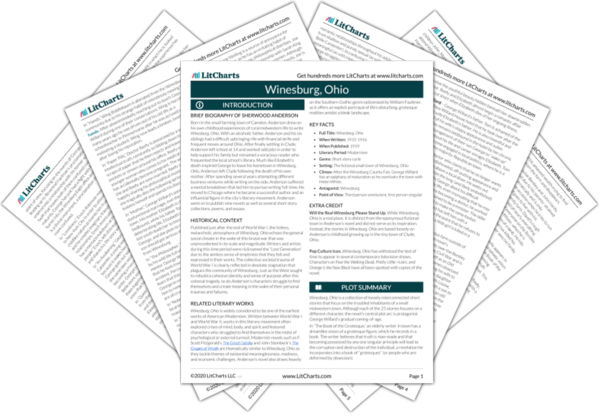Next
Summary
Winesburg, Ohio Study Guide |
Next
Summary
|
Welcome to the LitCharts study guide on Sherwood Anderson's Winesburg, Ohio. Created by the original team behind SparkNotes, LitCharts are the world's best literature guides.

Will the Real Winesburg Please Stand Up. While Winesburg, Ohio is a real place, it is distinct from the eponymous fictional town in Anderson’s novel and did not serve as its inspiration. Instead, the stories in Winesburg, Ohio are based loosely on Anderson’s childhood growing up in the tiny town of Clyde, Ohio.
Pop Culture Icon. Winesburg, Ohio has withstood the test of time to appear in several contemporary television shows. Characters on Fear the Walking Dead, Pretty Little >Liars, and Orange is the New Black have all been spotted with copies of the novel.